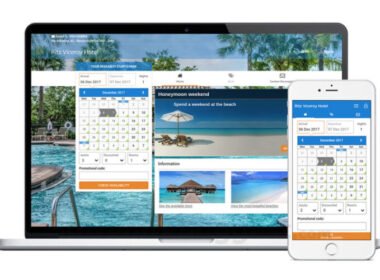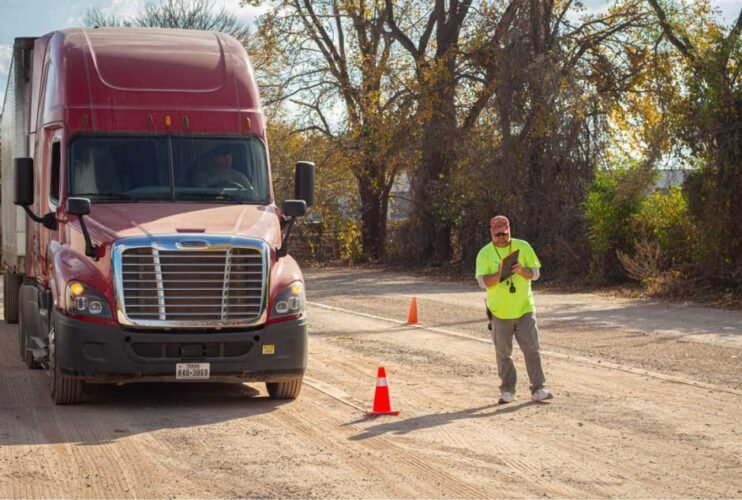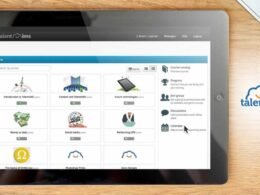If you’re considering a career in trucking, enrolling in a CDL driving school is one of the most important steps you can take. But what exactly should you expect from a commercial driver’s license (CDL) training program? The experience can vary by state, school, and license type, but there are many consistent elements that every future truck driver will encounter.
In this blog, we’ll walk you through everything you can expect—from your first day in the classroom to your time behind the wheel—so you’re fully prepared to hit the road toward a successful trucking career.
-
Understanding the Role of a CDL Driving School
A CDL driving school is more than just a place to learn how to drive a truck. It’s a comprehensive training environment designed to prepare you for every aspect of the commercial trucking world. These schools help students:
- Pass the required written and driving exams
- Understand Department of Transportation (DOT) regulations
- Learn essential safety protocols and driving techniques
- Get hands-on experience with commercial vehicles
Most importantly, a reputable school will give you the tools and confidence to succeed in the industry, not just pass your CDL test.
-
Pre-Enrollment Requirements
Before you step foot into a CDL driving school, you’ll need to meet certain prerequisites. These typically include:
- A valid driver’s license
- A clean driving record (minor infractions may be acceptable)
- Proof of age (usually 18 for intrastate and 21 for interstate driving)
- The ability to pass a DOT physical and drug screening
Some programs also require a high school diploma or GED, though many focus more on your ability to meet physical and safety standards.
-
Program Structure: What You’ll Learn
Most CDL driving schools follow a structured curriculum that includes both classroom instruction and behind-the-wheel training. Here’s a breakdown:
Classroom Training
This phase typically lasts 1–2 weeks and covers topics like:
- CDL permit preparation
- Vehicle systems and controls
- Federal and state trucking laws
- Trip planning and logbooks
- Hazardous material handling (if applicable)
- Basic mechanical knowledge
You’ll be expected to pass the CDL written knowledge test during or after this stage, which is required to obtain your Commercial Learner’s Permit (CLP).
Range Practice
After classroom instruction, you’ll move to a closed-course driving range. Here, you’ll practice essential skills such as:
- Pre-trip inspections
- Straight-line backing
- Offset backing
- Parallel parking
- Coupling and uncoupling trailers
Range practice builds muscle memory and confidence before you head onto public roads.
Road Driving
The final portion of training places you in real-world conditions. You’ll drive on highways, rural roads, and city streets under the supervision of an instructor. You’ll also:
- Practice shifting (manual or automatic, depending on the truck)
- Learn safe lane changes, turns, and braking
- Handle emergency scenarios and adverse weather
- Practice fuel-efficient driving techniques
By the end of this stage, you should feel ready to take your CDL skills test.
-
Length of CDL Training
Most full-time CDL driving school programs last anywhere from 3 to 8 weeks, depending on the license type (Class A or B) and whether you’re training full-time or part-time. Some schools offer accelerated programs or night/weekend options for those balancing other responsibilities.
-
Costs and Financial Aid Options
The cost of attending a CDL driving school varies but generally falls between $3,000 and $8,000. This price may include:
- Classroom materials and textbooks
- Access to trucks and simulators
- Exam fees and endorsements
- Job placement assistance
Many schools offer financial aid, scholarships, or payment plans. Some trucking companies even sponsor training in exchange for a work commitment after graduation. Be sure to ask about these options during your admissions interview.
-
Types of CDL Licenses Offered
Not all students are training to be long-haul truckers. Depending on your career goals, you might pursue:
- Class A CDL: For operating combination vehicles (like tractor-trailers). This license offers the broadest job opportunities.
- Class B CDL: For single vehicles like dump trucks, buses, or delivery trucks.
- Class C CDL: For smaller vehicles carrying hazardous materials or more than 16 passengers.
Make sure the school you choose offers the class of license you need.
-
Job Placement and Career Services
A good CDL driving school won’t just train you—they’ll also help launch your career. Many offer job placement services and partner with reputable carriers nationwide. You may have the chance to:
- Interview with recruiters before you graduate
- Attend job fairs or hiring events
- Access resume and interview coaching
Some programs even guarantee job placement if you meet certain criteria. Be sure to ask your school about post-graduation support.
-
What Makes a CDL Driving School Reputable?
With so many options out there, how do you choose the right CDL driving school? Look for programs that are:
- Accredited or certifiedby the Professional Truck Driver Institute (PTDI) or a similar body
- Staffed by experienced instructors with real-world trucking experience
- Equipped with up-to-date vehicles and training technology
- Transparent about graduation rates and job placement statistics
- Highly reviewed by alumni
Avoid schools that promise “guaranteed” licenses or seem more focused on collecting tuition than helping students succeed.
-
Common Challenges and How to Overcome Them
CDL training is intense—and that’s by design. You’re learning a high-responsibility skillset. Some challenges you might encounter include:
- Nervousness behind the wheel: Instructors are trained to help ease your fears.
- Difficulty understanding vehicle systems: Ask for extra help or tutoring if needed.
- Balancing life and training: Look for flexible programs if you have work or family obligations.
Remember: thousands of students graduate from CDL programs every year—if they can do it, so can you.
-
After Graduation: What’s Next?
Once you’ve passed your CDL exam and received your license, you’re ready to enter the workforce. But the learning doesn’t stop there.
- Many companies offer paid on-the-job trainingor mentorship programs for new drivers.
- You’ll likely start with regional or team driving rolesbefore moving up to solo or long-haul assignments.
- You can eventually specialize in areas like hazmat, tanker, or oversized loads—each with its own set of endorsements and pay incentives.
Your first year as a truck driver will be a time of rapid learning and growth. But with the solid foundation provided by a CDL driving school, you’ll be ready to rise to the challenge.
Final Thoughts
Enrolling in a CDL driving school is the first step toward a stable, rewarding, and in-demand career. Whether you’re looking to drive across the country or stick closer to home, a good training program will prepare you not only for the CDL test but for the realities of life on the road.
Expect to study hard, stay focused, and push your comfort zone—but also expect to gain the skills, knowledge, and confidence you need to become a professional truck driver.
If you’re ready to take the wheel, then your journey starts now. Safe travels and happy hauling!










